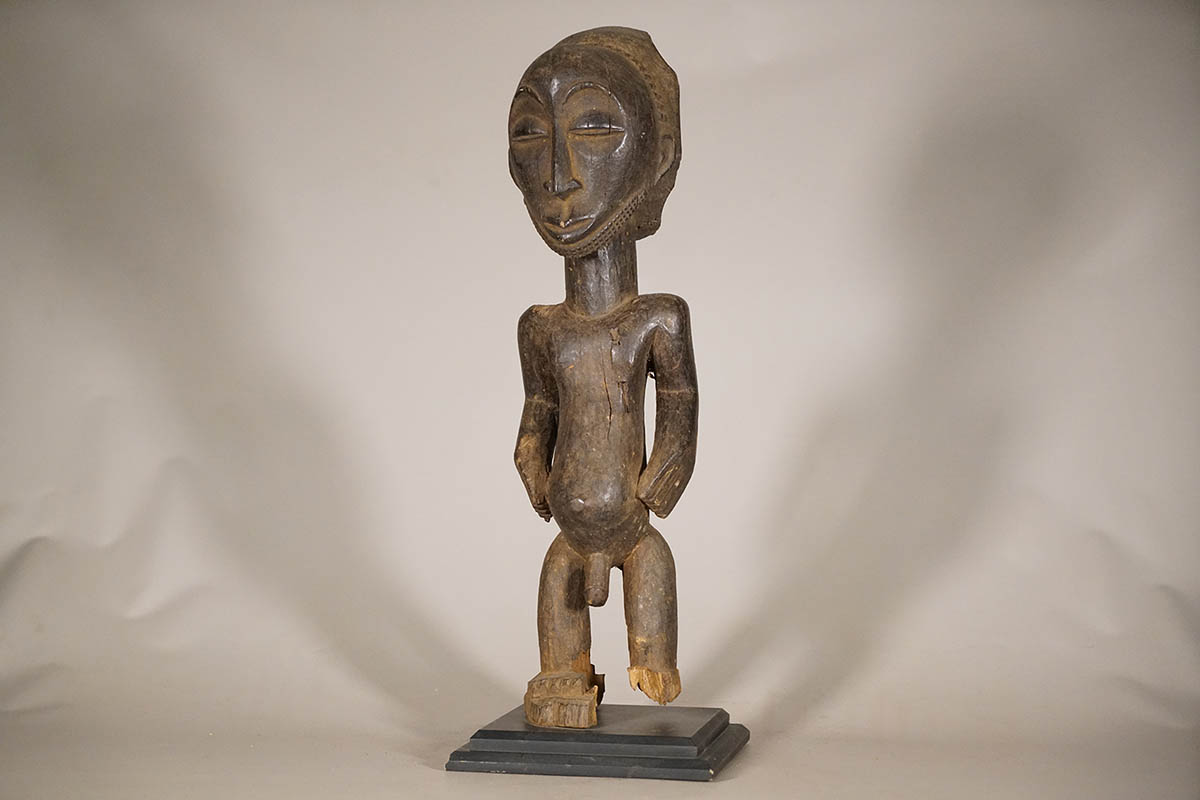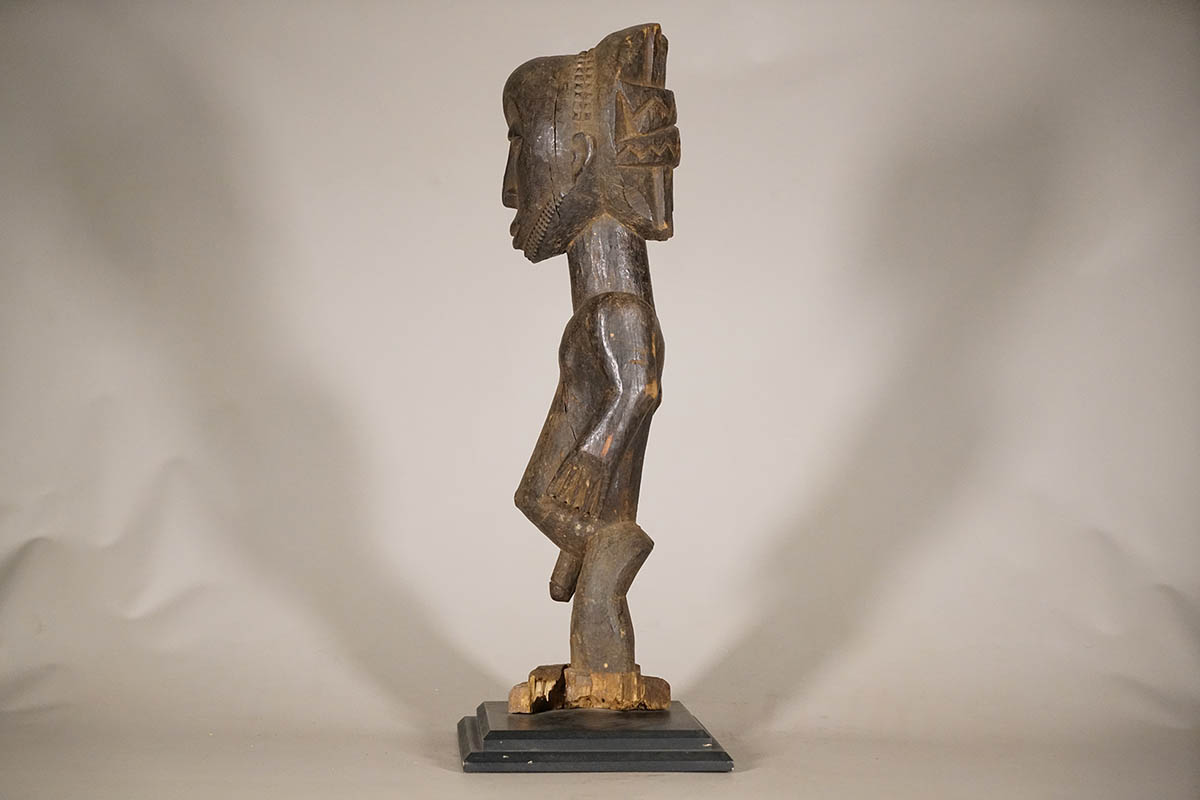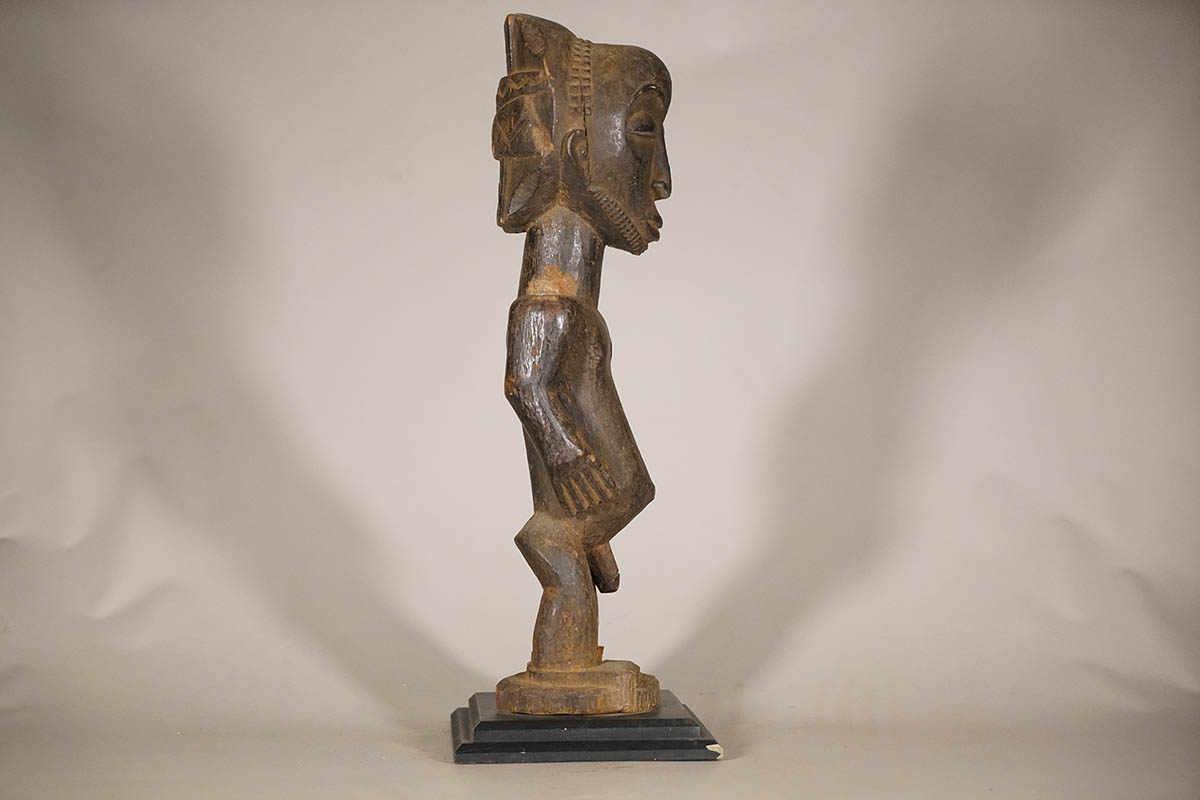This male Hemba figure has some wear and tear and is missing one of his feet. The piece features a man with delighted facial expression, standing with his hands resting on each side of his swollen stomach, which represents their ancestors embracing and watching over their descendants. He stands 28 inch tall, weighs 10.5 pounds, and comes mounted to wood base. There are minor stable cracks through-out this piece.
Delighted Male Hemba Statue 28″ on Base | DRC | African Art
Original price was: $395.00.$158.00Current price is: $158.00.
Sold

| Type of Object | Figure with base. |
|---|---|
| Country of Origin | DR Congo |
| Ethnicity | Hemba |
| Approximate Age | Unknown |
| Material | Wood, Pigment |
| Height (Inches) | 28" |
| Width | 5" |
| Depth (Inches)" | 6" |
| Weight (Pounds) | 10.5 lbs |
| Overall Condition | Possible minor imperfections and wear & tear, including but not limited to scuffing, cracking and minimal chipping. Possible previous repairs. See photos or inquire for more details. |
Tribe Information
About the Hemba People
“During the 18th century, the Hemba people, led by their chief Niembo, migrated from the south-west and settled on the right bank of the Lualaba River, in a region of fertile savannah. Today, they number 80,000 and are divided into large clans which, by definition, are families with a common ancestor. The hereditary chief of each clan is called the Fumu Mwalo and is the keeper of the ancestor figures. He renders justice and his status as clan head means that he has a privilege of receiving numerous gifts. The Hemba live mostly from farming manioc, sesame, yams and beans. Secret societies such as Bukazanzi for the men and Bukibilo for the women counterbalance the Fumu Mwalo’s power.
Two types of Hemba mask have been identified so far: the first is the rarest and displays a perfectly symmetrical human face with a small mouth and a linear nose set between two slanted eyes. The second type of mask imitates a monkey face with a large, pierced, crescent-shaped mouth and pointed nose. The function and meaning of these masks remain obscure.”
Source:
Baquart, Jean-Baptiste. The Tribal Arts of Africa. New York: Thames and Hudson Inc. 1998. Print.






